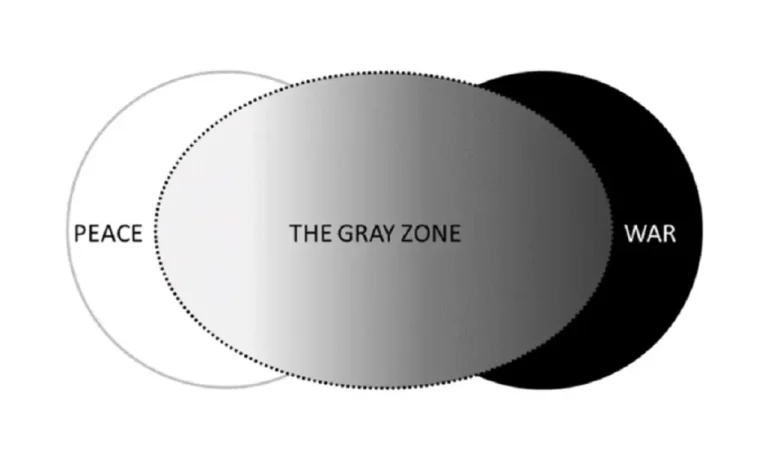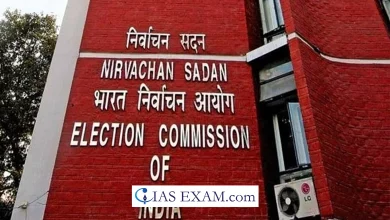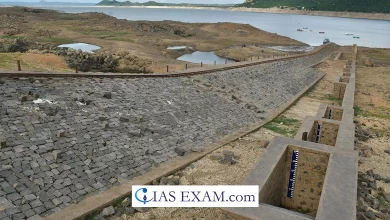Grey Zone Warfare and its Significance
GS Paper 3 - International Relations, Security Forces & its Mandates

Context
In contemporary international relations, the concept of grey zone warfare has emerged as a significant phenomenon, reflecting the shifting dynamics of global conflicts. Positioned between overt conflict and peace, grey zone warfare represents a nuanced form of aggression that encompasses a spectrum of activities aimed at advancing national objectives while avoiding direct confrontation. This editorial analysis delves into the significance of grey zone warfare in the context of contemporary geopolitics, exploring its manifestations, implications, and the challenges it poses to traditional notions of security and conflict resolution.
Grey Zone Warfare – Definition and Characteristics
- Grey zone warfare, also known as hybrid warfare or ambiguous warfare, denotes a strategic approach employed by state and non-state actors to achieve their objectives through unconventional means without crossing the threshold of traditional armed conflict.
- This form of warfare is characterized by its ambiguity, complexity, and reliance on asymmetric tactics such as cyberattacks, disinformation campaigns, economic coercion, proxy warfare, and subversion of political processes.
Historical Context
- Cold War Legacy: The conditions of the Cold War era, marked by nuclear deterrence between superpowers, spurred the adoption of grey zone tactics to avoid catastrophic escalation.
- Resourceful Adversaries: Nations resort to grey zone tactics to advance their interests without triggering a full-scale conflict, particularly when faced with superior adversaries.
Instances of Grey Zone Warfare
- South China Sea Disputes: China’s assertive actions in the South China Sea, including maritime militia presence and territorial claims, exemplify grey zone warfare. Confrontations with countries like the Philippines underscore the contentious nature of these tactics.
- Taiwan Strait Tensions: Chinese military maneuvers near Taiwan and Taiwan’s complaints of increased Chinese military activity highlight the use of grey zone strategies to pressure without provoking outright conflict.
- US-China Economic Rivalry: Economic sanctions, trade tariffs, and maritime reconnaissance efforts by the United States against China illustrate grey zone competition beyond military realms.
Significance
- The growing prominence of grey zone warfare in contemporary international relations underscores its significance as a strategic tool for advancing national interests and undermining adversaries.
- Unlike conventional warfare, which entails clear delineation of battle lines and military engagements, grey zone warfare operates in the shadows, exploiting ambiguity to achieve strategic gains while minimizing the risk of escalation and international condemnation.
- One of the key drivers behind the proliferation of grey zone warfare is its effectiveness in exploiting vulnerabilities inherent in modern societies and institutions.
- By targeting critical infrastructure, exploiting information networks, and undermining democratic processes, aggressors seek to sow discord, division, and uncertainty, thereby eroding trust between states and destabilizing the international order.
Implications
- The implications of grey zone warfare extend beyond the realm of traditional security threats, encompassing political, economic, and societal dimensions.
- In the digital age, cyberspace has emerged as a battleground for grey zone operations, with adversaries leveraging cyberattacks to disrupt communication networks, steal sensitive information, and undermine public trust in government institutions.
- Moreover, the proliferation of disinformation and propaganda campaigns poses significant challenges to democratic governance and public discourse.
- By disseminating false narratives and manipulating public opinion, aggressors seek to undermine the legitimacy of democratic institutions, sow division among populations, and weaken societal cohesion.
Challenges and Responses
- Addressing the challenges posed by grey zone warfare requires a multifaceted approach that combines diplomatic engagement, strategic communication, and robust deterrence measures.
- At the diplomatic level, fostering greater cooperation and information-sharing among states can help build trust, enhance situational awareness, and facilitate coordinated responses to emerging threats.
- Furthermore, investing in resilience-building efforts, enhancing cybersecurity capabilities, and promoting media literacy and critical thinking skills can help inoculate societies against the spread of disinformation and propaganda.
- Additionally, strengthening international norms and legal frameworks governing conflict resolution and cyber operations can help deter aggressors and hold them accountable for their actions.
Conclusion
Grey zone warfare represents a paradigm shift in the nature of conflicts in the 21st century, posing significant challenges to traditional notions of security and stability. As state and non-state actors increasingly resort to asymmetric tactics to achieve their objectives, understanding the significance of grey zone warfare becomes imperative for policymakers, military strategists, and scholars alike. By adopting a proactive and collaborative approach to countering grey zone threats, the international community can strive towards a more secure, resilient, and peaceful world order.
SOURCE: The Indian Express





.png)



